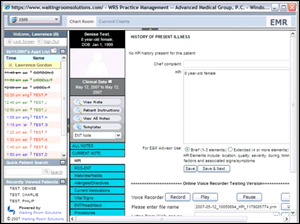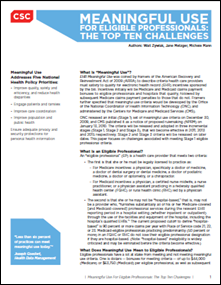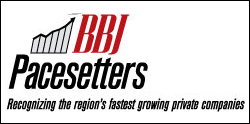Intelligent Healthcare Information Integration 4/24/10
Intelligent EHR Help
Many if not most of you reading these pages are already EHR savvy. You have either struggled through the process of swapping your trusty old pen and paper for some version of digital data collection or else you’re on the side of the suppliers of the necessary paraphernalia for HIT. While I hope you’ll enjoy this post, I really hope you’ll consider sharing it with one of your friends or colleagues who aren’t yet on the electronic bandwagon.
For those providers out there who’ve made the switch, remember back to the Days of Decision? (Maybe that should be Days of Indecision). Remember all the hours of frustration spent just trying to find out what information you needed in order to even begin to figure out what sort of system might best suit your needs? Remember when “you didn’t know what you didn’t know” about EMRs?
For the vendor folks out there, how much more valuable would a potential new client be if they were fully prepared to make the switch to an EMR? Wouldn’t a medical practice that had all its ducks rowed up be much more likely to have a successful install, one that doesn’t revert to the dreaded “Failed and De-installed” file?
If we’re honest with ourselves, there’s no such beast, yet, as a perfect EMR. They all have issues and areas of weakness. But, it isn’t the “not ready for prime time” phenomenon that derails many installations. The main circuit breaker to blow, preventing many, if not most, successful transitions from pen and paper to digital seems to me to be lack of adequate preparation and support.
So much emphasis has traditionally been placed upon EMR/EHR selection. If more practices were adequately prepared for the gigantic operational switch that is to come with an EMR, then failure rates would fall and purchased systems sitting on shelves collecting dust would be less frequent.
Of course, larger centers and institutions have IT departments, educational staff, and committees ad nauseam to assist in the preparatory process. (Some still don’t prep up very well.) But, smaller practices, where the vast majority of healthcare in our country is delivered, have no such support teams to task with these time-consuming chores. A doc or two, perhaps an office manager, is saddled with taking on the tremendous task of trying to determine what their little organization needs to get “digified” and then must sift through scores, hundreds even, of available products.
Consultants are available and can provide the help needed, but they are often somewhat beyond the means of smaller practices. This is especially true if a practice needs “full service” planning, selection, and negotiation assistance.
EHR selection tools are available, and I personally like several of them, but their roll is more limited, their focus being upon the actual selection of an EMR or EHR.
But, as many of us can attest, the planning portion is often the key element in successful EMR adoption. Poorly done, it can sink the most enthusiastic advocate’s plans. Taking the time before implementation to define the practice’s current situation, determine how key workflow and staffing issues will be altered, delineate technology needs, and calculate capital requirements can dramatically enhance the opportunities for successful EMR implementation.
This, however, is very tough to do when you’re busy taking care of patients and meeting the day-to-day demands of a small business. That’s why I got very excited when I discovered a new tool designed to fill this need, one that is both affordable and considerate of the needs of a small practice.
Having already implemented our EHR, I can’t bear first hand witness to this tool’s full prowess. I did convince the developers to allow me access to their web portal, a key component of the product, which gave me a deeper view than just a demo or white page. From this access, from my personal past experiences, and from the innumerable conversations I’ve had with colleagues seeking to demystify this digital dilemma, I can say that it appears to fit the old bill of “just what the doctor ordered.”
They have consolidated a ton of information, organized it into guided steps and phases, and built, essentially, a correspondence course for EHR preparation and eventual selection. It is a “hand holding,” but in the very best sense. Getting started with figuring out what you need is a huge hurdle; having an affordable tool to assist you in starting the race on the correct foot is huge. This product provides guidance, helps you find and organize the information you’ll need, and know what work within your own practice is necessary.
Not insignificantly, this particular instrument also includes real, live consultants, vetted by the MGMA, to assist with the inevitable questions and unique practice issues. Their time is used more efficiently as much of the legwork is done via the guided “homework” laid out in the online program. Additional consultant time is available, for an additional fee, if required. There’s even a higher end version where you can have the consultant act as the complete project manager.
The developer of this “homeschooler tool” is has their eye upon profit, to be sure. However, at the proffered price, they obviously aren’t going to ring any big bells at the NYSE from this product alone. The motive, which isn’t hidden or obtuse, comes from enhanced connectivity: the more digitally connected a practice is, the more likely they are to seek digitally-connected tools. Thus, Welch Allyn – you know, the folks whose name is probably on the otoscope you or your doctor uses every day – saw fit to try and assist practices with EMR adoption by developing their “EHR Prep-Select Program” as they now have a passel of products which you’ll only want if you’re down with things digital.
In preparing this piece, I Googled and Binged about a bit. There may be other such tools available, but I wasn’t able to easily find anything similar. Actually, the landscape doesn’t appear all that different from when I first began my EMR search earlier this decade. There’s lots of information to be found, but sorting through what is necessary and valuable for me and mine versus what is salesmanship and schlock appears just about as daunting as ever.
Having a full-time, industry-savvy consultant help walk you through this morass would, obviously, be preferable. Larger groups and institutions are well-served by such professional guidance. Even I used one for my final contract negotiations and was very satisfied with both the cost and the service. But, as a solo doc, I would never have been able to afford the five figures it would have run to engage a consultant for full preparatory planning. Such a tool as this, though, appears to be a “next best” option at a fraction of the price.
I have absolutely no desire begin the process again myself – believe me! – but I can say with unequivocated assuredness that, if I were, I would absolutely consider such a helpmate. The time savings alone would be well worth the investment.
By the way, if anyone knows of similar tools or services, I’d really appreciate hearing about them.
From the trenches…
“The rule is perfect: in all matters of opinion our adversaries are insane.” – Mark Twain

Dr. Gregg Alexander, a grunt in the trenches pediatrician, directs the “Pediatric Office of the Future” exhibit for the American Academy of Pediatrics and is a member of the Professional Advisory Council for ModernMedicine.com. More of his blather…er, writings…can be found at his blog, practice web site or directly from doc@madisonpediatric.com.














The article about Pediatric Associates in CA has a nugget with a potentially outsized impact: the implication that VFC vaccines…